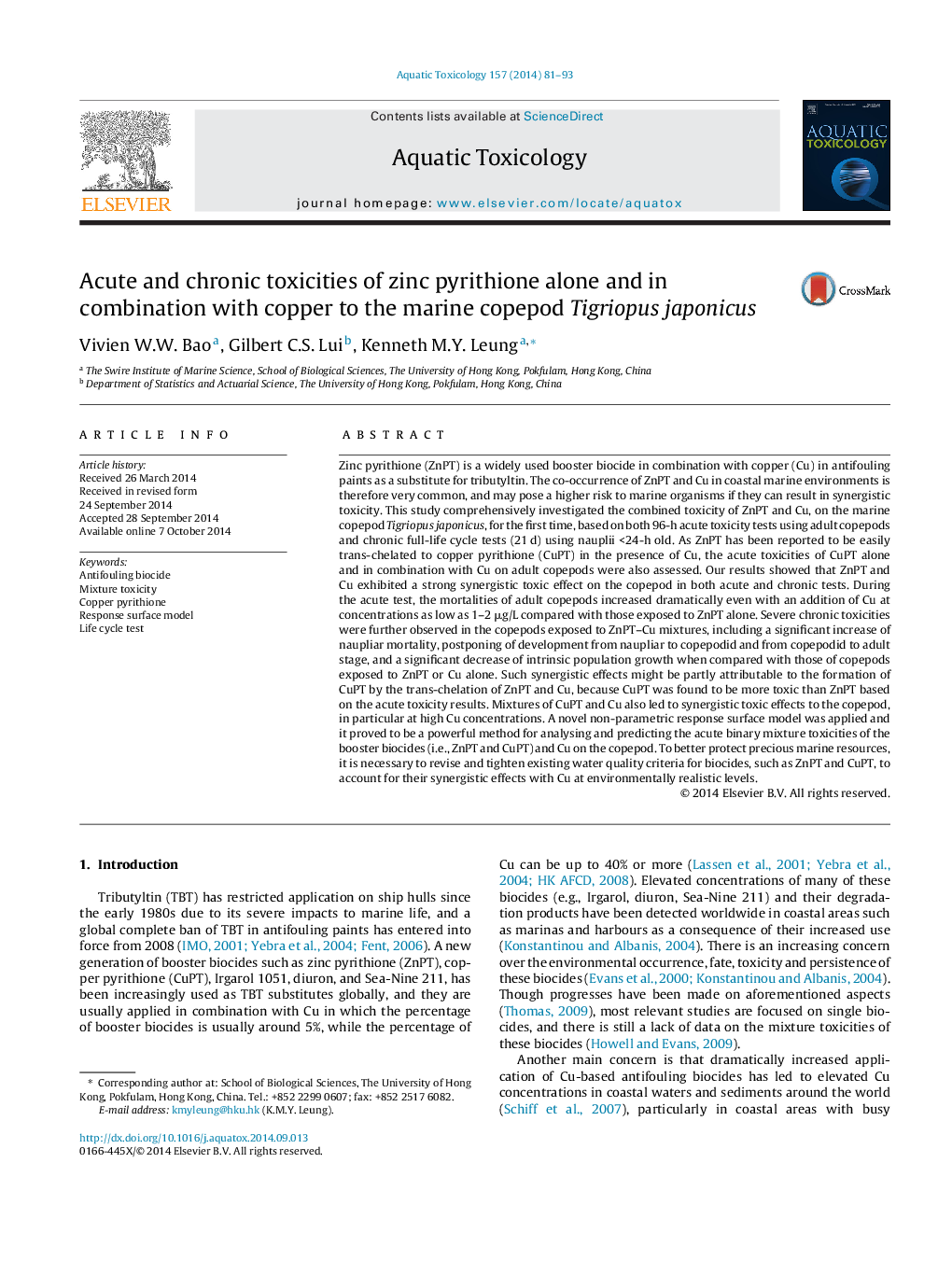| کد مقاله | کد نشریه | سال انتشار | مقاله انگلیسی | نسخه تمام متن |
|---|---|---|---|---|
| 4529296 | 1625948 | 2014 | 13 صفحه PDF | دانلود رایگان |

• Zinc pyrithione (ZnPT) and copper (Cu) commonly coexist in the marine environment.
• Acute and chronic toxicities of ZnPT and Cu mixtures to a copepod were examined.
• Their mixtures exhibited strong synergistic toxic effects to the copepod.
• The synergistic toxicity was also observed at environmentally relevant Cu levels.
• A novel non-parametric response surface model can describe the mixture toxicities.
Zinc pyrithione (ZnPT) is a widely used booster biocide in combination with copper (Cu) in antifouling paints as a substitute for tributyltin. The co-occurrence of ZnPT and Cu in coastal marine environments is therefore very common, and may pose a higher risk to marine organisms if they can result in synergistic toxicity. This study comprehensively investigated the combined toxicity of ZnPT and Cu, on the marine copepod Tigriopus japonicus, for the first time, based on both 96-h acute toxicity tests using adult copepods and chronic full-life cycle tests (21 d) using nauplii <24-h old. As ZnPT has been reported to be easily trans-chelated to copper pyrithione (CuPT) in the presence of Cu, the acute toxicities of CuPT alone and in combination with Cu on adult copepods were also assessed. Our results showed that ZnPT and Cu exhibited a strong synergistic toxic effect on the copepod in both acute and chronic tests. During the acute test, the mortalities of adult copepods increased dramatically even with an addition of Cu at concentrations as low as 1–2 μg/L compared with those exposed to ZnPT alone. Severe chronic toxicities were further observed in the copepods exposed to ZnPT–Cu mixtures, including a significant increase of naupliar mortality, postponing of development from naupliar to copepodid and from copepodid to adult stage, and a significant decrease of intrinsic population growth when compared with those of copepods exposed to ZnPT or Cu alone. Such synergistic effects might be partly attributable to the formation of CuPT by the trans-chelation of ZnPT and Cu, because CuPT was found to be more toxic than ZnPT based on the acute toxicity results. Mixtures of CuPT and Cu also led to synergistic toxic effects to the copepod, in particular at high Cu concentrations. A novel non-parametric response surface model was applied and it proved to be a powerful method for analysing and predicting the acute binary mixture toxicities of the booster biocides (i.e., ZnPT and CuPT) and Cu on the copepod. To better protect precious marine resources, it is necessary to revise and tighten existing water quality criteria for biocides, such as ZnPT and CuPT, to account for their synergistic effects with Cu at environmentally realistic levels.
Journal: Aquatic Toxicology - Volume 157, December 2014, Pages 81–93